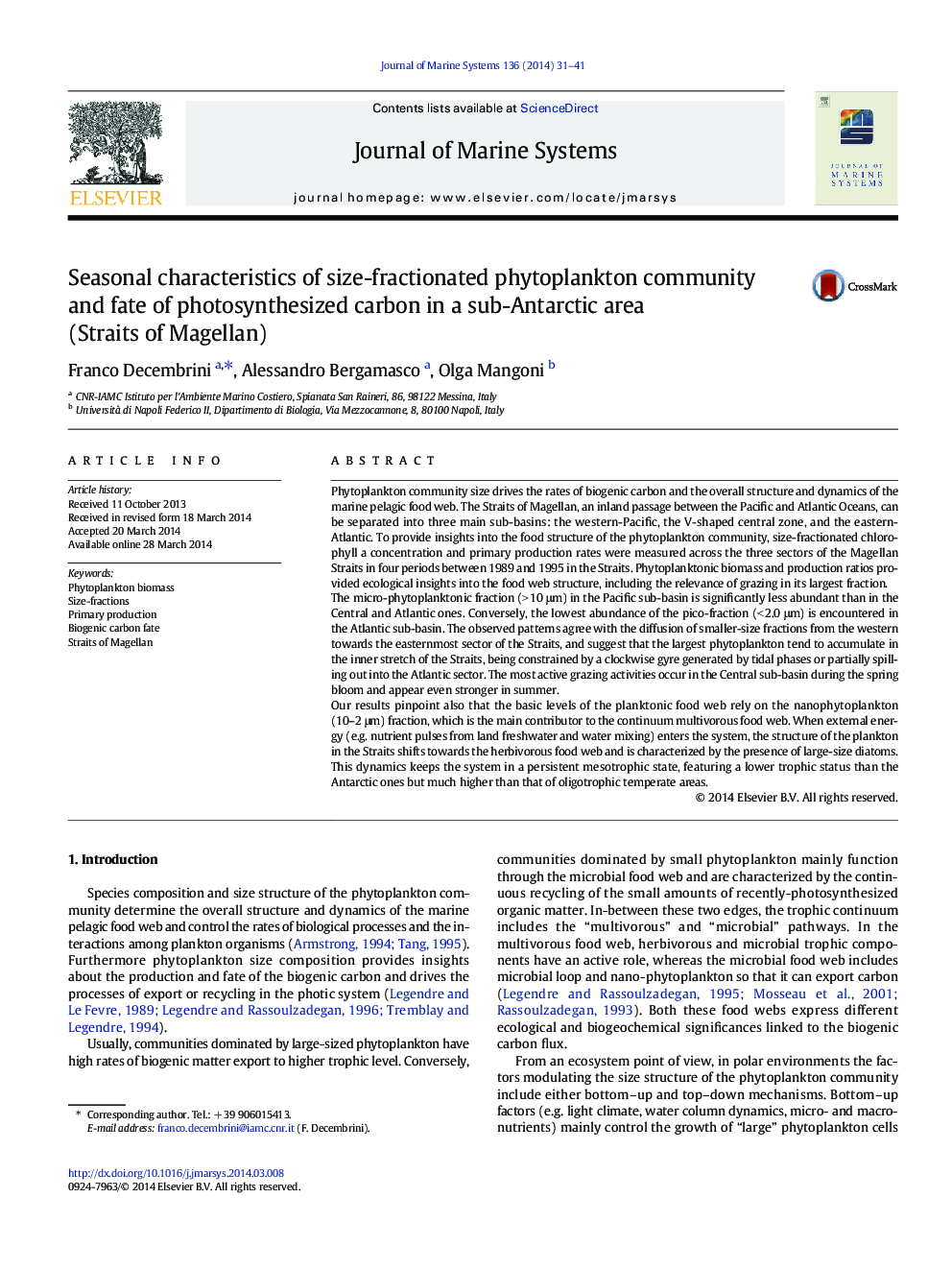| Article ID | Journal | Published Year | Pages | File Type |
|---|---|---|---|---|
| 4548020 | Journal of Marine Systems | 2014 | 11 Pages |
•Size structure and function of the phytoplankton community in the Straits of Magellan•Role of phytoplankton size-fractions (pico-, nano-, micro-) in channeling the carbon through the planktonic food web•Formulation of a functioning scheme of the first trophic level in this sub-Antarctic environment
Phytoplankton community size drives the rates of biogenic carbon and the overall structure and dynamics of the marine pelagic food web. The Straits of Magellan, an inland passage between the Pacific and Atlantic Oceans, can be separated into three main sub-basins: the western-Pacific, the V-shaped central zone, and the eastern-Atlantic. To provide insights into the food structure of the phytoplankton community, size-fractionated chlorophyll a concentration and primary production rates were measured across the three sectors of the Magellan Straits in four periods between 1989 and 1995 in the Straits. Phytoplanktonic biomass and production ratios provided ecological insights into the food web structure, including the relevance of grazing in its largest fraction.The micro-phytoplanktonic fraction (> 10 μm) in the Pacific sub-basin is significantly less abundant than in the Central and Atlantic ones. Conversely, the lowest abundance of the pico-fraction (< 2.0 μm) is encountered in the Atlantic sub-basin. The observed patterns agree with the diffusion of smaller-size fractions from the western towards the easternmost sector of the Straits, and suggest that the largest phytoplankton tend to accumulate in the inner stretch of the Straits, being constrained by a clockwise gyre generated by tidal phases or partially spilling out into the Atlantic sector. The most active grazing activities occur in the Central sub-basin during the spring bloom and appear even stronger in summer.Our results pinpoint also that the basic levels of the planktonic food web rely on the nanophytoplankton (10–2 μm) fraction, which is the main contributor to the continuum multivorous food web. When external energy (e.g. nutrient pulses from land freshwater and water mixing) enters the system, the structure of the plankton in the Straits shifts towards the herbivorous food web and is characterized by the presence of large-size diatoms. This dynamics keeps the system in a persistent mesotrophic state, featuring a lower trophic status than the Antarctic ones but much higher than that of oligotrophic temperate areas.
